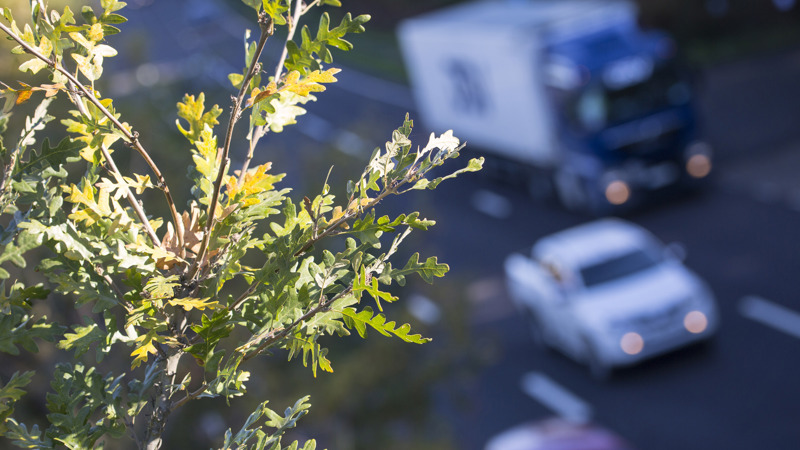Trees near your property
Answers to questions we often receive about trees on our land and neighbouring property

Our trees and your property
Trees provide valuable screening for our roads and help them to blend into the surrounding landscape.
Sometimes, however, trees can be a nuisance to people and property alongside our land. We want to be a good neighbour, but we need to balance any action we take against:
- our responsibility under the law
- maintaining the purpose we planted the trees for (for example screening)
Here are answers to some questions people often ask us about trees, nuisance and damage.
Trees overhanging property
You may prune unprotected trees and hedges overhanging your land, and the roots growing beneath your land, up to your boundary.
You don't need our permission to do this, but you mustn't trespass onto our land
You will need to make formal application to the local planning authority before working on trees protected by tree preservation orders or growing in conservation areas.
Remember that you have a duty of care. If any work you do, or ask others to do for you, kills a tree or makes it dangerous, you may be held liable for criminal damage.
Shading a garden
There isn't a legal right to light other than for land that is built upon. We don't usually prune trees because they are shading a neighbouring garden.
There are exceptions for evergreen hedges that block light from neighbouring properties, which are covered in the government guidance on hedge height and light loss.
Falling leaves
We don't prune to prevent leaf fall. This is regarded as a natural event that an owner can't be held responsible for.
There are also practical reasons why we don’t do tree work, especially pruning, for leaf fall.
The answer is generally that pruning a healthy tree makes it grow more and put on more leaves. This can make the tree top heavy - creating a hazard where there was none before.
If we prune when there's no need, we can cause problems which need more management and maintenance to sort out.
We can also cause more nuisance. For example, unnecessary pruning will make leaf fall worse, not better.
Nuisance
We only take action when a tree causes a legal nuisance to neighbouring properties.
This means a nuisance that is actionable in law. For example, when trees are actually touching buildings and causing direct damage.
We also don't prune:
- to improve television or internet signals, or how solar panels work
- to prevent nuisance from pests (for example greenfly), falling fruit, pollen or bird droppings
- to allow the construction of new entrances or driveways
Structural damage
We will take action when a tree is the major cause of serious structural damage to buildings. This includes soil shrinkage - where soil shrinks (for example through lack of moisture) and removes support from a structure
We carefully investigate claims of structural damage and expect them to be backed by expert evidence.
We don't usually take action where tree roots have entered drains. It's very rare for a root to break through into a drain, though roots will enter drains that are already broken or damaged.
Danger
We will prune trees if they're likely to cause danger to people or property. However, people often mistakenly think a tree is dangerous when it is growing naturally and safely.
Tall trees or trees with broad spreading crowns or trees that sway aren't necessarily dangerous. Trees naturally bend and sway in the wind, as flexibility in their branches naturally prevents them breaking.
Leaning trees often don't present a safety risk - trees develop fatter growth rings on one side to compensate for the lean, making themselves more stable.
Your trees and our roads
Sometimes trees on neighbouring land can cause problems, or even danger to road users.
Section 154 of the Highways Act 1980 empowers us to take action where trees on neighbouring land are overhanging roads as to cause danger or obstruction, including
- endangering or obstructing vehicles or pedestrians
- blocking drivers' view
- blocking light from streetlights
We can serve notice on a landowner to make trees, hedges or shrubs safe if we can't do the work from our land.
As a last resort, the law allows us to enter land, take necessary action to remove the risk and claim back the cost from the landowner.
In all these cases, we're legally required to give notice of our actions. We'll always try to make contact with the landowner before entering property.
Get in touch
If you think that trees on our land are causing nuisance, damage or danger to your property, contact us:
Email: info@nationalhighways.co.uk
General enquiries: 0300 123 5000
